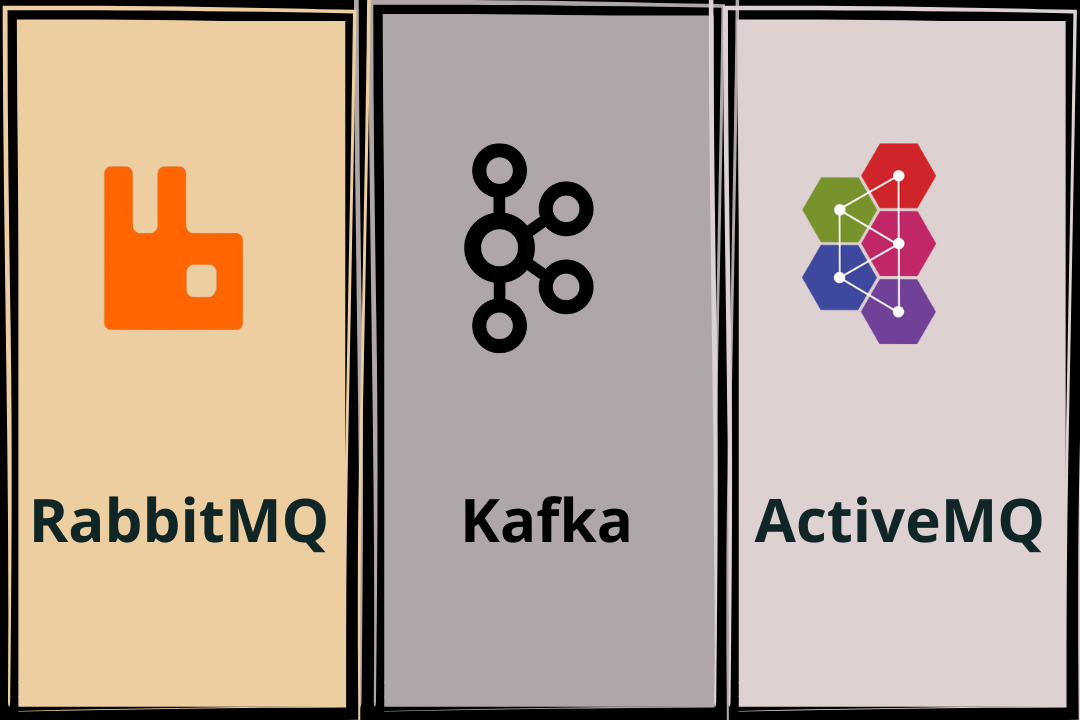System Design Mastery: Your Roadmap to Acing Interviews
Nowadays, system design has become a required skill for software developers and IT professionals, which is why system design interviews are becoming a big deal. In these interviews, companies evaluate candidates based on their ability to design complex systems. If you dream of securing a job at a major tech company like those in FAANG, or aim to start your own startup, knowledge of system design is essential.
Learning a system design and clearing the system design interview in the top tech companies is not hard. You just need a clear roadmap for the preparation of the system design interview.
In this blog, I'll guide you about learning the system design from scratch to advance. I'll also give you the roadmap to prepare for your next system design interview and crack it easily.
What is System Design?
The term 'system design' refers to the designing a particular system. It is a step-by-step process of defining the architecture, modules, data, components, and interface for a system to satisfy specified requirements. In simpler terms, we can say that it’s a pre-planned architectural structure of the software or application.
Let’s understand the system design using a real-life example. Imagine you're building a house. Before you start building the house and laying bricks, you need a detailed plan or prepare a map deciding how many rooms there will be, where the kitchen goes, how the plumbing will work, and where the electrical outlets should be. System design is a lot like this architectural planning but for software and digital systems.
Moreover, system design is not just about making a system, but it's about developing large-scale distributed, efficient, reliable, and consistent systems.
Why should software developers learn system design?
Here are the top reasons to learn the system design.
- System designing skills are vital for software developers to create the architecture of large-scale distributed systems or understand pre-developed systems.
- System designing skills also help developers to identify the further requirements of the system and improve the system accordingly. For example, to improve the caching strategies to improve the performance of the system.
- System designing skills also allow developers to monitor and debug the system effectively. So developers can easily identify issues in the application and resolve them quickly.
- Also, system design is a highly valued skill in the IT industry. So, learning it can help in the career growth of software developers.
Why is System Design Used?
There are multiple reasons behind preparing the design of the system before starting to write the first line of the code for the system development. You can also consider the below reasons as a benefit of the system design.
1. Solving Real-World Problems
System design allows to break the complex problems into manageable components. Furthermore, it helps software engineers and developers to solve each component individually, allowing them to solve the problem efficiently.
2. Blueprint for development
The pre-design of the digital system works as a blueprint for the development team. Once the system designer prepares the architecture of the system, including various components, the developer's team can simply follow it and write a code to build the real-time softwares or applications.
3. To achieve efficiency
Generally, a well-designed system is more efficient than other systems. For example, if the system is not designed to handle thousands of users concurrently, the performance of the system can decrease when the user base of the system grows. So, it is necessary to pre-plan the system requirements and develop the system accordingly.
4. Cost-effectiveness
A thoughtful system design can lead to cost savings by efficiently managing the resources of the system. For example, developers can monitor the system, find potential issues, and resolve them before they become costly to fix.
The Relationship Between Coding and System Design
In the software development process, two essential components often share the spotlight: coding and system design. While these two elements are intricately connected, they serve distinct purposes and require a delicate balance.
System Architecture vs. Code Implementation
The system architecture defines the architecture of the system, explaining the various components of the system and how each component interacts with other components. It refers to the higher-level design of the system.
The code implementation is a part of translating the system design into the actual code via a team of software developers. It converts the system design into an executable program.
So, the system design process doesn’t need coding, but for converting the system into an executable programm, coding is required.
10 Common Principles of System Design
System design depends on a set of common principles for guiding the software developers and architectures to design a robust system.
Here are 10 common system design concepts that every software developer should know.
- Scalability
- Reliability and Fault Tolerance
- Availability
- Maintainability
- Performance Optimization
- Modularity
- Security and Privacy
- Data Privacy and Ethics
- Encapsulation and Abstraction
- Document Everything
Let’s look at each principle with real-life examples.
1. Scalability
The term ‘scalability’ refers to the system’s ability to handle the increased workload and user demand without a significant decrease in performance.
The system should be designed in such a way that it can be scaled easily. To achieve scalability, one should focus on selecting the architectures, database solutions, and different load-balancing strategies to maintain the system’s performance.
There are two types of scaling.
- Vertical scaling: It requires to upgrade the current servers or machines
- Horizontal scaling: It requires adding a few more servers.
Example: E-commerce stores like Amazon handle billions of monthly active users. In the festival or sale, people visit online stores frequently. So, Amazon does vertical or horizontal scaling to handle the increased number of users while maintaining the performance of their website or application.
2. Reliability and Fault Tolerance
Reliability measures if the system works as expected without crashes.
On the other hand, Fault tolerance involves designing a system to continue functioning even in the presence of hardware failures, software bugs, or other unexpected errors. Developers are required to do error handling to achieve reliability in the system.
Example: Platforms like Amazon, Facebook, etc., are highly reliable experiences, allowing users to use the applications without interruption.
3. Availability
The term ‘availability’ refers to how much time the system is operational or available to users. To achieve high availability, developers need to decrease the downtime of the system. The system’s downtime can be handled by handling the system failures.
Example: Platforms like Hotstar ensure that their system is highly available and their users can access the content every time. They achieve high availability using load balancing and replicas of the data center, as it handles the failure.
4. Maintainability
Maintainability focuses on making systems easy to maintain, troubleshoot, and update throughout the system development. High maintainability can be achieved by well-documented code, modular architecture, and version control practices.
For the maintainable system, developers require less effort to make changes to the system and maintain it throughout the life cycle.
Example: The code of applications like Facebook, Netflix, etc., contains billions of lines, and thousands of developers work on the same project. The maintainable system reduces the cost of maintenance.
5. Performance Optimization
Performance optimization involves designing a system with high response time and optimal throughput while using the available resources. To improve the performance of the system, developers are required to improve the caching mechanisms, data storage and retrieval strategies, and various algorithms used in the system.
Example: The average response time of the Google Cloud platform is under 200 milliseconds, even if they are handling millions of users daily.
6. Modularity
The term ‘modularity’ refers to the breakdown of the system into various self-combined and reusable components. Each component of the system can be called a module.
As each module is reusable, developers can use it in various parts of the code without writing the repeated code. It also helps in designing a maintainable system. Moreover, it makes parallel development easier as each team can work on different modules.
Example: The code of large-scale systems like Apple, Google, etc., is divided into multiple modules, and all modules are connected.
7. Security and privacy
Security and privacy is a vital principle in the system design. Security involves protecting the system from attacks, unauthorized access, and data breaches. Privacy focuses on safeguarding the user’s data.
Security and privacy can be achieved by implementing the firewall and access control mechanisms.
Example: Companies like Google, Amazon, etc., secure their systems by implementing firewalls and two-factor authentication. So, it really becomes hard for hackers to break and attack the system.
8. Data Privacy and Ethics
Data privacy refers to protecting the user’s data. The system should allow access to the user’s data with the user’s consent only. Designing systems with data privacy in mind involves providing transparency to users regarding data usage.
Ethical considerations include avoiding practices that compromise user trust or exploit personal information for unethical purposes, such as surveillance or discriminatory algorithms.
Example: Instagram allows you to access another user’s data only if the user accepts your follow request. In simple terms, you are required to have the consent of the user to access their data.
9. Encapsulation and abstraction
Encapsulation and abstraction is a fundamental principle of the system design. Encapsulation includes bundling the data and methods that are related to each other and operate on a single unit. These bundles are also known as object modules.
Abstraction involves hiding the information and showing only the required information to the users to decrease the complexity of the system. The encapsulation and abstraction provide code security, maintainability, and reusability.
10. Document everything
Documentation of the system design is always necessary. Documentation of the system involves creating a document that covers the architecture of the system, configuration details, coding standards, and user manuals.
The document allows the different teams to understand the architecture of the system and collaborate on a single project. Moreover, it allows new onboarding team members to know about the system.
Example: Google is exposing API endpoints to access your Gmail inbox via third-party applications. They have excellent documentation on how to use Gmail API so that any software developer can integrate it with their application.
10 Key Topics of System Design
The system design covers a wide range of topics, such as load balancing, caching mechanisms, networking protocols, security and fault tolerance, etc. Here, I’ve covered 10 system design topics.
1. Load Balancing
Load balancing involves distributing the incoming network requests or traffic to multiple servers to balance the workload. The load balancing optimizes resource utilization and enhances the system’s availability and scalability.
For the load balancing Round robin algorithm, Least connection and IP hashing techniques are used. A load balancer sends a request to the server, which is less busy, and through IP hashing, it redirects the request coming from a single client to the same server.
Example: Whenever Hostar streams a live cricket or football match, their users increase. So, they use the load balancers to handle the incoming traffic load and distribute them across multiple servers.
2. API Gateway
The API gateway is an intermediary server or service that works between the client and the backend or microservices of the system. It offers a single entry point for the client to access the various services of the system.
The primary functions of the API gateway are request routing, authentication, authorization, rate limiting and throttling, caching, request-response transformation, etc.
Example: Let’s take the example of the Amazon. When you signIn or sign up in Amazon, the client will request an API gateway, and it will route the request to the authentication service to authorize the user. Similarly, when you want to access product information or want to place an order, the API gateway routes the request to the related service.
3. Caching
Caching is a mechanism to store the frequently access data. It is a high-speed storage operating between the application client and server. The performance of the system can be improved by using the various caching mechanisms.
When users make a request for the data from the server, it checks the cache storage first. If data is not available in the cache, it accesses from the server, stores in the cache storage, and serves to the client.
Cookies can also be used for caching.
Example: A Google search engine caches your past searches and most popular queries, and whenever the user searches related queries, it suggests the queries.
4. CDN
A CDN is an acronym for the content delivery network, which is a distributed network of servers. It is used to store images, videos, scripts, etc., and deliver content to the users based on their geographical location.
It is used to optimize the performance of the system and decrease the latency in delivering the content to users.
Example: When you access a website in the United Kingdom, whose server is hosted in the United States, CDN caches the content of the website to the nearby server and delivers the content to users.
5. Data Partitioning
Data partitioning means dividing the database into smaller and manageable chunks. There are two types of data partitioning: vertical partitioning and horizontal partitioning.
The horizontal partitioning is also referred to as a sharding. It means splitting the columns of the table into different tables. Vertical partitioning refers to dividing the data table’s row into multiple tables.
Example: The social media platform like TikTok has a large user base. So, they store the user’s data in different databases according to the user’s geographical location.
6. Database Replication
Replication means copying or duplication. Database replication refers to managing the multiple copies of the database at various locations.
The main purpose of database replication is to enhance fault tolerance, redundancy, and data availability. It can also be used for the load balancing.
Example: Amazon has multiple replicas of databases located at various locations. If one server fails, it serves the data from other servers and avoids system failures and downtime.
7. Micro Services
Microservices breaks down complex application or problem into smaller and individual tasks. Each service communicates through the API with the application. The microservice architecture offers flexibility, ease of maintenance, and scalability.
Example: A ride-sharing application like Uber was developed using microservices. In such applications, each service manages a particular task like authenticating users, location tracking, payment processing, etc. It makes it easy to add new features to the application.
8. DNS
The DNS stands for the Domain Name System. The concept of the DNS is introduced to transfer the IP addresses into the actual name.
A website is hosted on a particular server, and each website has a unique IP address that users can use to access the website content. It’s not easy to remember the IP address for multiple websites. So, DNS works as a phonebook and maps the IP address of the website with the actual name.
Example: When you open www.designgurus.io in the web browser, the DNS will find the IP address and serve the content of the website according to an IP address.
9. Proxies
Proxies are the intermediatory service between the client and the internet or the client and server. There are two types of proxies.
- Forward proxy
- Reverse proxy
In the forward proxy, the server operates between the client and the internet. When you make any request from a client, it goes to the forward proxy, and then the proxy server makes a request to the actual server, gets the resources, and delivers them to the client.
The reverse proxy is also a server that operates in front of the actual server. So, no one can directly interact with the actual server, but the client can interact with an actual server via a proxy server. It ensures the security of the actual server.
10. Network Protocols
Protocol means rules and network protocol refers to the rules for exchanging the data between multiple systems.
There are different types of network protocols, and developers need to ensure which protocols should be used while designing the system. For example, HTTPS is used for secure connection, HTTP is used for unsecured connection, TCP is used for data transfer when packet loss is not allowed, UDP can be used for live streaming, etc.
For an in-depth understanding of the system design fundamental concepts, you can check the Grokking system design fundamentals course by DesignGuru.
System Design in Interviews
System design interviews are becoming a crucial part of technical interviews at large-scale tech companies like FAANG.
In the system design interview, companies evaluate the candidate's skills in designing the large-scale distributed system. So, it is important to prepare for the system design interview if you want to get a job as a software developer in a top tech company.
Tips for preparation of system design interview
Here are some tips that freshers and experienced candidates should follow to prepare for the system design interview.
1. Gaining a Deep Understanding of Fundamentals
The first step in preparation for your next system design interview is to gain a deep understanding of the fundamental concepts of system design, like caching, CDN, microservices, load balancing, etc.
Also, Don’t just remember the definition of these concepts, as your interviewer won’t ask you to explain the concept directly. Instead, you should look at practical scenarios where these concepts are used, as you need to implement these concepts when you design a system in your interview.
You can check 18 fundamental concepts of system design.
2. Building a strong foundation in computer science concepts
The next step is to build a strong foundation in computer science concepts like data structure and algorithms, object-oriented programming, database management systems, etc.
These concepts will help you to interact with the complex systems.
3. Practicing problem-solving and critical thinking
In the system design interview, you will be asked an open-ended problem with multiple answers. You need to implement the different system design concepts and discuss various scenarios.
The interviewer may ask you a question like how you will scale the system if the number of system users gets doubled in 24 hours. In such cases, you need to think about the problem and discuss problem-solving.
4. Learning from real-world case studies
The next step is to do real-world case studies to understand the distributed system. For example, understand the system design of Google or Amazon. You should know how they are scaling their system, how their system is reliable and consistent, what are their caching strategies, etc.
Learning from real-world case studies will increase your knowledge about system design concepts. Enough knowledge can boost your confidence during the system design interview.
5. Mock interviews and peer feedback
Before you go for the actual interview, it is important to practice with the Mock interview. You can ask your mentor or fellow developers to take your mock interview and give feedback for improvement.
However, there are some online platforms available where you can attend mock interviews. You can check MockInterviews by DesignGuru. They have mentors with more than 20+ years of experience as software developers in companies like Meta, Google, Amazon, etc., and they will take your mock interview and give you feedback. It can be a good opportunity for anyone to interact with them and get feedback.
6. Leveraging online resources and courses
You can also enroll in the self-paced courses for the system design interview preparation. There are multiple courses available in the market, but you can choose any one of them which is best. Our course recommendations are given below.
- Check the Grokking the System Design Interview to prepare for the system design interview.
- Check the Grokking the Advance System Design Interview to prepare advanced topics for the system design interview.
Is system design asked for freshers?
This question is asked by most freshers on the internet.
The answer to the question is freshers may asked about the system design in the interview. Generally, experienced developers do the system design in the companies, so most companies don’t evaluate freshers based on their system design skills.
However, FAANG companies ask basic system design questions to the freshers. So, if you are a fresher, you need to be prepared with system design.
If you have 4+ years of experience, you must pass the system design interview in top tech companies.
System Design Questions Asked in Interviews
Here are the top 10 system design interview questions asked at top tech companies like Google, Amazon, Microsoft, Meta, Netflix, etc.
- Design a social media system
- Design Facebook messenger
- Design a parking lot
- Design Google Drive
- Design an online file-sharing system
- Design ride-sharing system
- Design e-commerce store
- Design API rate limiter
- Design URL-shortening service
- Design a web crawler
Final Thoughts
I’ve covered the most known system design concepts in this guide for your next system design interview. You should also read about each system design principle and concept in-depth and consider their practice use for more understanding.
To get more guidance about the system design interview, you can enroll in the System Design Interview RoadMap online course.
Also, go through these FAQs before you sit in your next system design interview. Furthermore, attending the mock interviews and solving the complex system design problems is also recommended.







